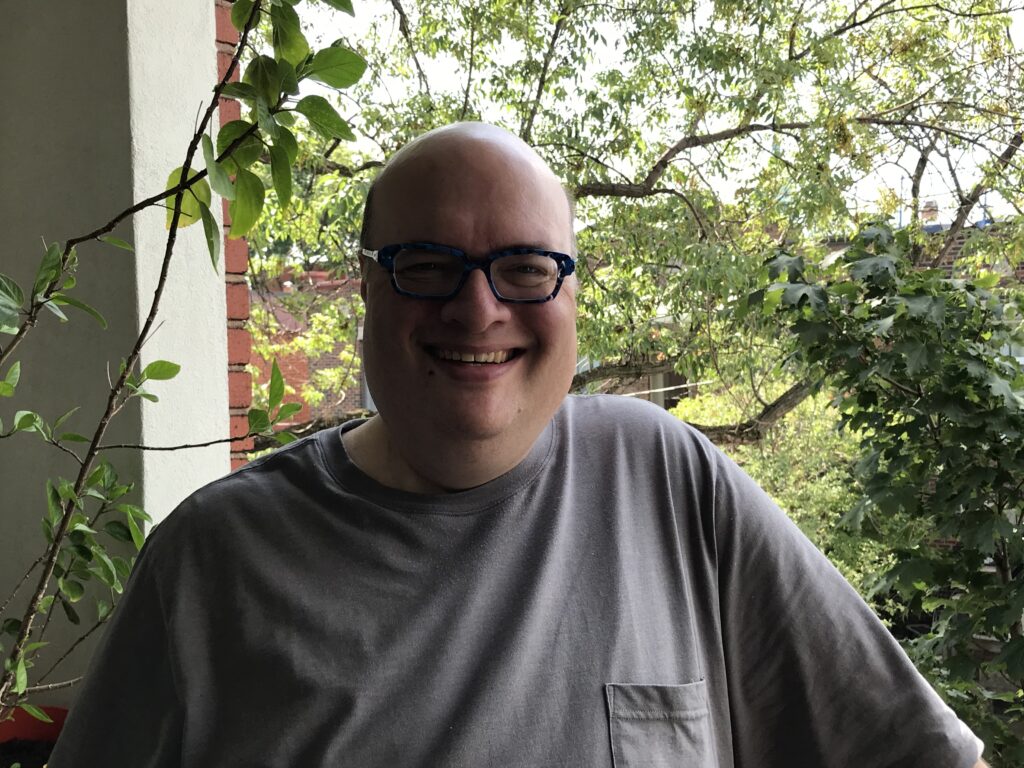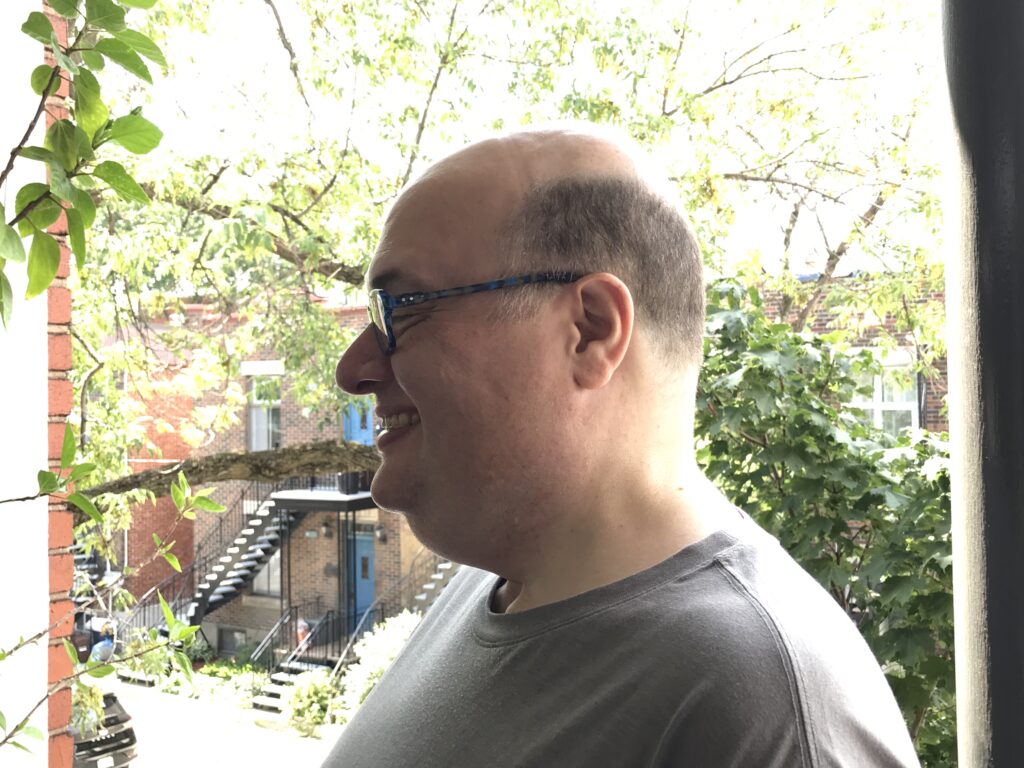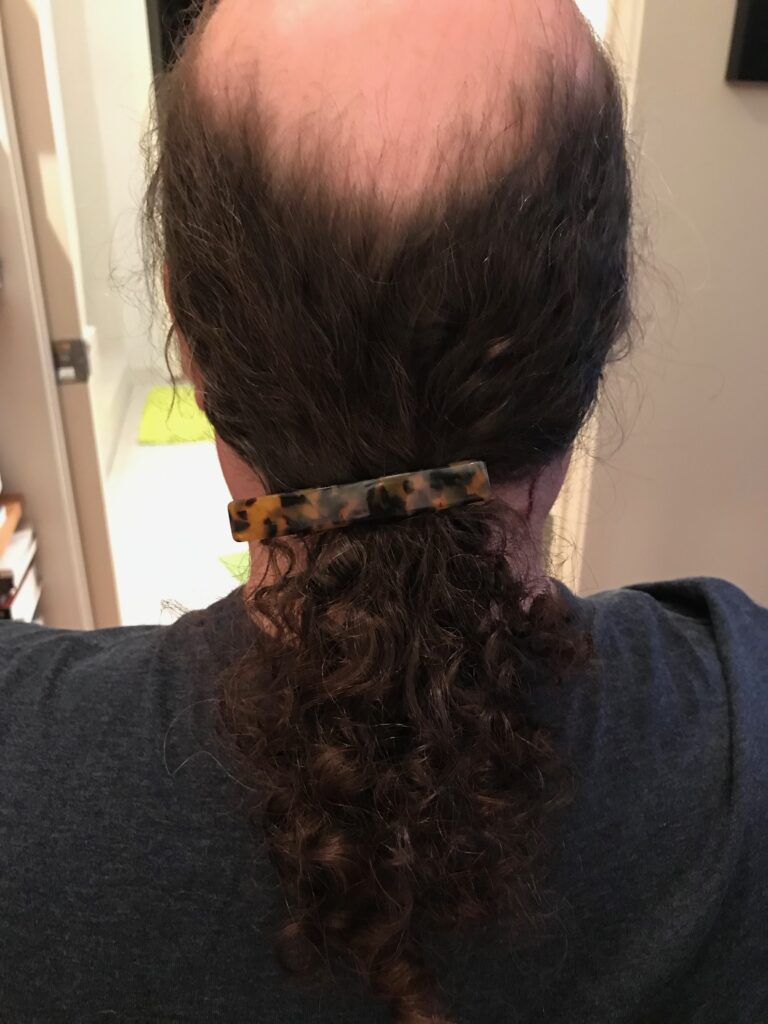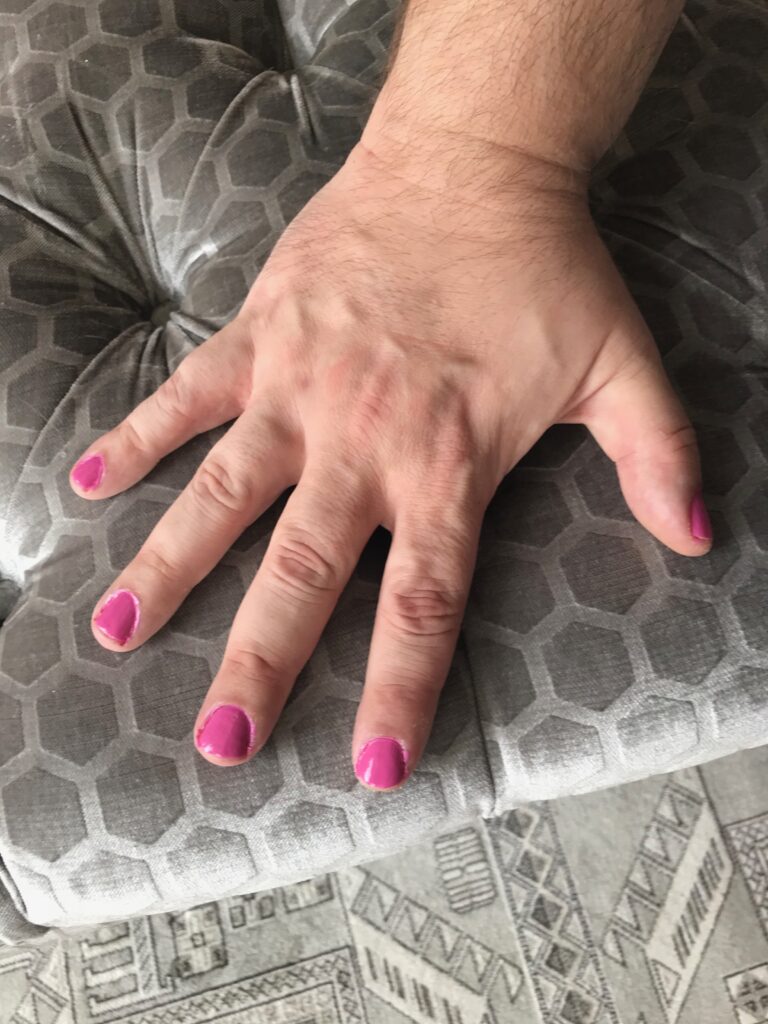The #1 question I am getting from people is a variation of “what do I need to buy to record my lectures?”
This is actually mostly the wrong question, but it is a question people have, so let’s answer it.
The first thing you probably need is a moving blanket or thick quilt, as explained in the first post of this series. Canadian Tire sells moving blankets for $20. That is the single most important thing you can buy to improve the sound of your lectures. I am not kidding.
The second post in my series is here. It tells you to make shorter recordings and not to listen to them all the way through once you know what you are doing.
In this post, I’ll deal with hardware and software, and give simple and slightly more complex solutions.
In what may be the final post in this series next week, I’ll talk about recording techniques.
The tl;dr is the simple solution below. I already told you what to buy if you’re going to only buy one thing, which is a moving blanket (or maybe you have a nice quilt you don’t mind hanging up?). You don’t absolutely need to buy anything to make a decent podcast for your students. You just need to record it well. But for those who want to know more….
What you need:
Technically, nothing other than the blanket and some headphones or earbuds. Your computer has a built in mic and you have probably been listening to people talk into built in mics all summer. Is it good enough? You tell me. Often you get a ton of room echo (a well-positioned moving blanket helps a lot with this), and the mic picks up all sorts of other noises. I think most people’s Zoom presentations using built in mics in untreated rooms sound like ass. But sometimes they sound fine. Will you sound fine? Try making a recording and find out.
So if you don’t want to use the built in mic, then you need
- a way to get sound–specifically, your voice and not a ton of other sounds–into the computer.
- A way for you to hear what you are doing.
- A way to edit that sound.
- ***And, this is shockingly important for how little attention anyone pays, you really really want to hear a bit of your own voice as it goes into the computer.*** People talk a lot about eye strain and Zoom fatigue, but without hearing a bit of your own voice on the way in, it is very likely that you’ve been yelling at your computer all day every day for those epic Zoom meetings. Yelling makes most people tired eventually.
What’s wrong with the built-in mic?
Maybe nothing. You could do ok with a moving blanket and the built in mic.
But everyone I’ve spoken with who has used an external mic for recording has said they think their voice sounds better. There are a lot of reasons for this, but let’s just say that while the computer microphone is a miracle of miniaturization, there are some compromises there because it’s right next to a loud environment (the inside of the computer) and doesn’t know where sound is coming from.
What’s wrong with the mic on my Apple wired earbuds?
See above, plus that awful scratching sound when it rubs up against your clothes. If you’re going to wear a mic, there are better options.
A Caveat
I am going to recommend specific products. We are living in an age where the cheapest stuff outperforms equipment I used in actual studios in the 1990s. There are a gazillion good options. I’m just saying these will work. I’ll explain what I use at the bottom.
The simplest solution
After acquiring your moving blanket or quilt (I AM NOT GOING TO STOP HAMMERING THIS POINT), you could invest in a simple all-in one solution plus a set of headphones. There are lots of good options but the one I’m recommending is the Blue Yeti Nano. It’s an all-in-one microphone and audio interface (the microphone converts sound into electricity, the audio interface converts electricity into a data stream). Want an even cheaper solution? The Shure MV-5 costs less, but I haven’t heard it or used it.
I recommend it for several reasons:
- It is dead simple to use.
- It sounds good enough. People argue about sound all day every day on the internet. Trust me, it’s good enough. Carrie just got one and we put it through its paces no undergrads are going to complain about the sound quality of her lectures.
- It plugs into your computer and doesn’t required special software to run.
- It comes with a stand.
- You can hear your own voice as you speak into it if you plug in the headphones I am recommending.
- It is recommended by speech therapists.
- The Yeti also has a lot of cool accessories. I recommend a broadcast arm. I have one attached to my desk, which means when I’m not using the mic, I just push it out of my way.
A couple things to know about the Yeti. You can turn your voice on or off in your own headphones by pressing the button on the front. You want it on. There is a button on the back that lets you choose a circle or a tiny heart shaped thing. Choose the heart shaped thing. That button is a pattern selection. The circle is an omni pattern which means the mic picks up everything coming from every direction. You don’t want that. The other pattern is called cardioid (cardio–heart) and picks up mostly what’s in front of the mic. If you aim it at yourself correctly, that’s you, and behind you is the blanket you’ve hung up, which means less reflected sound goes into the mic.
The Yeti has a couple downsides: it’s a newish product so its durability is in question. And it’s a condenser mic, which I consider a liability for most people recording at home. More on that in a moment.
You also need a decent pair of headphones. There are three important things in headphones for this applications:
- They are comfortable on your head.
- They are closed-back. Open-back headphones leak a lot of sound, like when you can hear the music pouring out of someone’s headphone on the metro. You want less leakage. BUT open-backed headphones are less hard on your ears, so for Zooms or everyday listening if you’re not sharing space with someone close by, they’re a better option.
- They must not be wireless. You need to plug them in. Bluetooth introduces latency which means you will hear your voice some time after you speak. This is an incredibly psychedelic effect but not great for when you want to deliver a lecture.
The Audio Technica ATM-H50X is a good choice in the $100+ range (they are “studio quality” and are actually found in actual studios sometimes), but really any headphone that doesn’t leak and is reliable will do. Just look for “closed back” and make sure they’re comfortable to wear.
A More Complex But Better Solution
The Yeti suffers from one problem. It is too sensitive for most home environments. Manufacturers sell things with specifications, and with flash, so something that sounds clear and bright in the store may be too good when you get it home. And some people read frequency responses and think that bigger is always better. (I know a scholar who has debunked theories of sound fidelity, but let’s leave that aside).
So if you’re comfortable with a little more tech, I have another recommendation.
- A broadcast arm. I like and use the K&M 23850, which also comes with an XLR microphone cable (XLR is just a standard, like USB–it’s defined by the shape of the plug and the type of signal it carries). Alternatively you could buy a desktop mic stand and an XLR cable long enough to get from your mic to your audio interface.
- An audio interface with an XLR input and a microphone pre-amplifier. The dead simplest one is the Shure X2U, but it’s actually not handy to have all your controls attached to the mic. On the plus side, you can plug it right into the mic and no longer need an XLR cable. But, I recommend the Focusrite Scarlett Solo. It’s nice to have the controls on your desk. And trust me, it’s good enough for recording your lectures. Hell, you could make a record with it if you wanted to and if people are complaining about your analog-to-digital conversion, your problem is the music, not the analog-to-digital conversion. Another inexpensive option is the Audient ID4.
- A good dynamic microphone. The Blue Yeti Nano is a condenser mic, as is the element in most computers. These have extended sensitivity and high end, which are great for some applications but not others. It is not as well publicized as it should be, but fancy studio condenser mics often sound worse in home recording setups than cheaper mics. Dynamic mics are less sensitive and have less of a frequency range. For recording lectures at home this is a actually good thing. It will make your voice sound more polished and radio-like. The can’t fail recommendation 99 times out of 100 is the Shure SM-58, which is used on stages all over the world and which could be used as a hammer and then returned to its mic duties and would probably still work (DO NOT TRY THIS AT HOME). There are cheaper clones but I don’t know which ones are good. Jentery Sayers just mentioned the also-not-too-expensive Rode PodMic, and he knows a thing or two about audio so I trust his recommendation. If you want the full on radio sound, the Electro-Voice RE-20 and Shure SM-7B are found in studios all over the world. If you get in close, these mics can give you that “voice of god” sound — works for men and women. However, they have switches and stuff on them and are a little more complicated. BUT good dynamic mics are hard to break, and so you can just mess around with them. Another option some people use is a clip-on lavalier mic (a “lapel mic”), but I haven’t, so I’m not going to cover those except to say that if you go this route, watch out for shirt noise.
- You still need some headphones.
So in this setup, which is more like what a studio uses, your mic turns sound into electricity, which goes down the XLR cable, then the preamp gives it some more juice, then the interface turns it into data. So you’ve disaggregated the parts of the Yeti Nano into a bunch of different things. This gives you more control, though.
The payoff for the setup is that you will get a better sound in most cases for home recording. The downside is it’s more complex. You now have to learn a mic, a preamp, and an interface. It’s easy but it’s learning.
If you’re new to this, I recommend the SM58 because it’s cheaper and will sound good 99 times out of 100. Beyond that it’s sort of like recommending nail polish colours (a newfound interest of mine) or neckties or something. It makes an aesthetic difference but people have different opinions.
Software
If you are using PowerPoint, you can just record your audio right onto the slides. This is the easiest solution.
If you want an audio editor, Audacity is free and not too hard to learn. There are lots of tutorials. It’s really no harder to edit sound than a word processor document. I teach it to my undergrads and have them making wacky sound art in less than a single 80 minute class session.
If you want easy to use audio-editing for podcasting, Rogue Amoeba has a good suite: Audio Hijack lets you record sound from anywhere on the internet, Fission lets you edit different kinds of audio together, and if you want to get super clever, there’s always Farrago for a soundboard.
There are tons of other good options, and even video programs like Camtasia have audio editing.
What about a camera and what’s this I keep hearing about light rings?
I am so not your guy on this question. But: if you’re recording into a laptop, raise it up so you’re not shooting from below (that’s how they shoot the “bad guy” in Hollywood movies) and use some good light on your face. Carrie and I got cheap Logitech light rings for our faces, though they are supposedly problematic for glasses. But since I’m not setting up a full lighting rig to record audio podcasts, it’ll do.
What I use: I have an actual home studio. We record and mix actual music and sound art sometimes. So I have a lot of choice. I love the SM7 on my voice for the voice-of-god effect. This summer for Zooms I have been using a Shure KSM-32 condenser mic, which I just told you not to use, but I’m good at this sound recording thing and it has a couple advantages I like (and they are used for some well known podcasts). My interface is an RME Babyface, which is a very fancy version of what the Focurite Scarlett does for more money (though it’s 2 models ago so you can pick them up used cheap–they sound amazing but the software is, ah, not intuitive). I use the K&M broadcast arm and move the mic back and forth every day and smile doing it. For software, I haven’t decided, but probably Ableton Live, which is made for electronic musicians but has lots of power for instantly editing lots of sound together. I know it really well. I also know Apple Logic well; it might also be good for my purposes. I would also like to be able to insert chapters into my audio so students can find stuff quickly, and so if I can do it with either of those programs, I will probably pick that one. For recording I use the ATH-M50 headphones, though for everyday use and critical listening I use Sennheiser HD600s. Open backed headphones are great for listening and not as hard on your ears.
—
My final instalment on performance is here. This is highly recommended.




